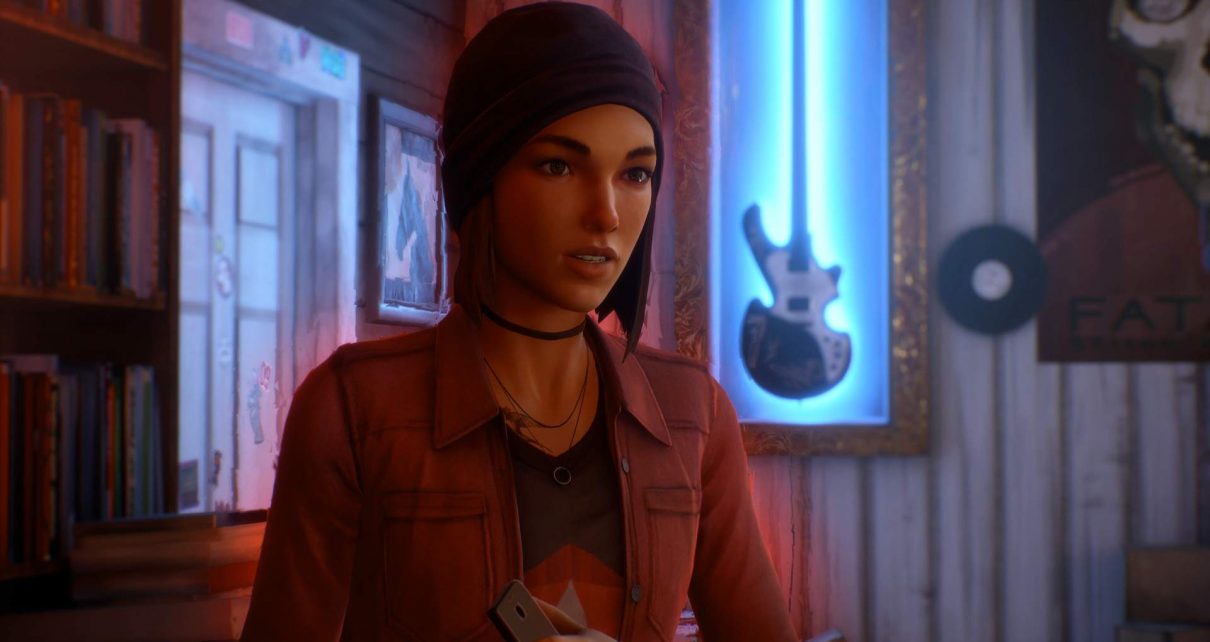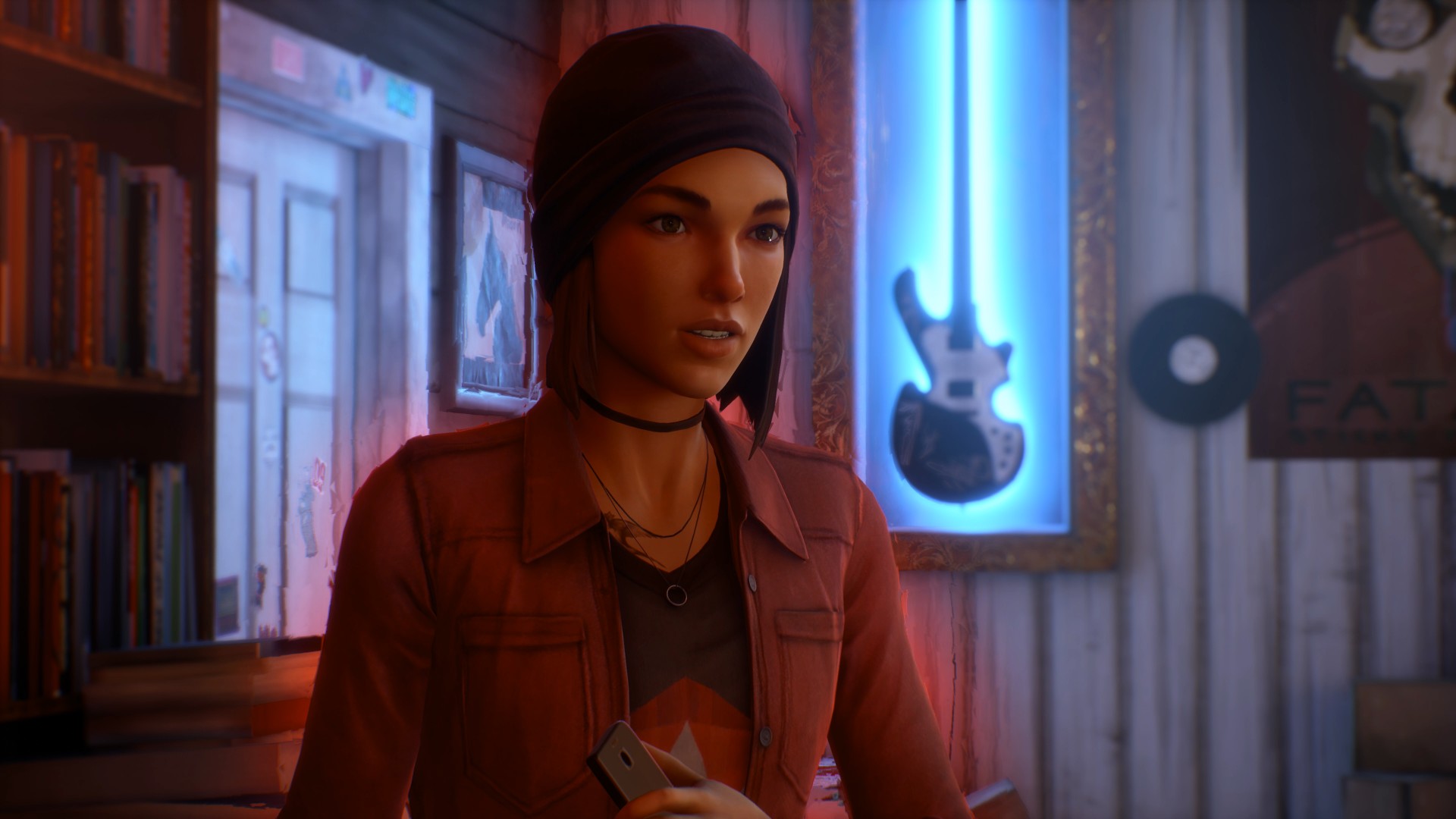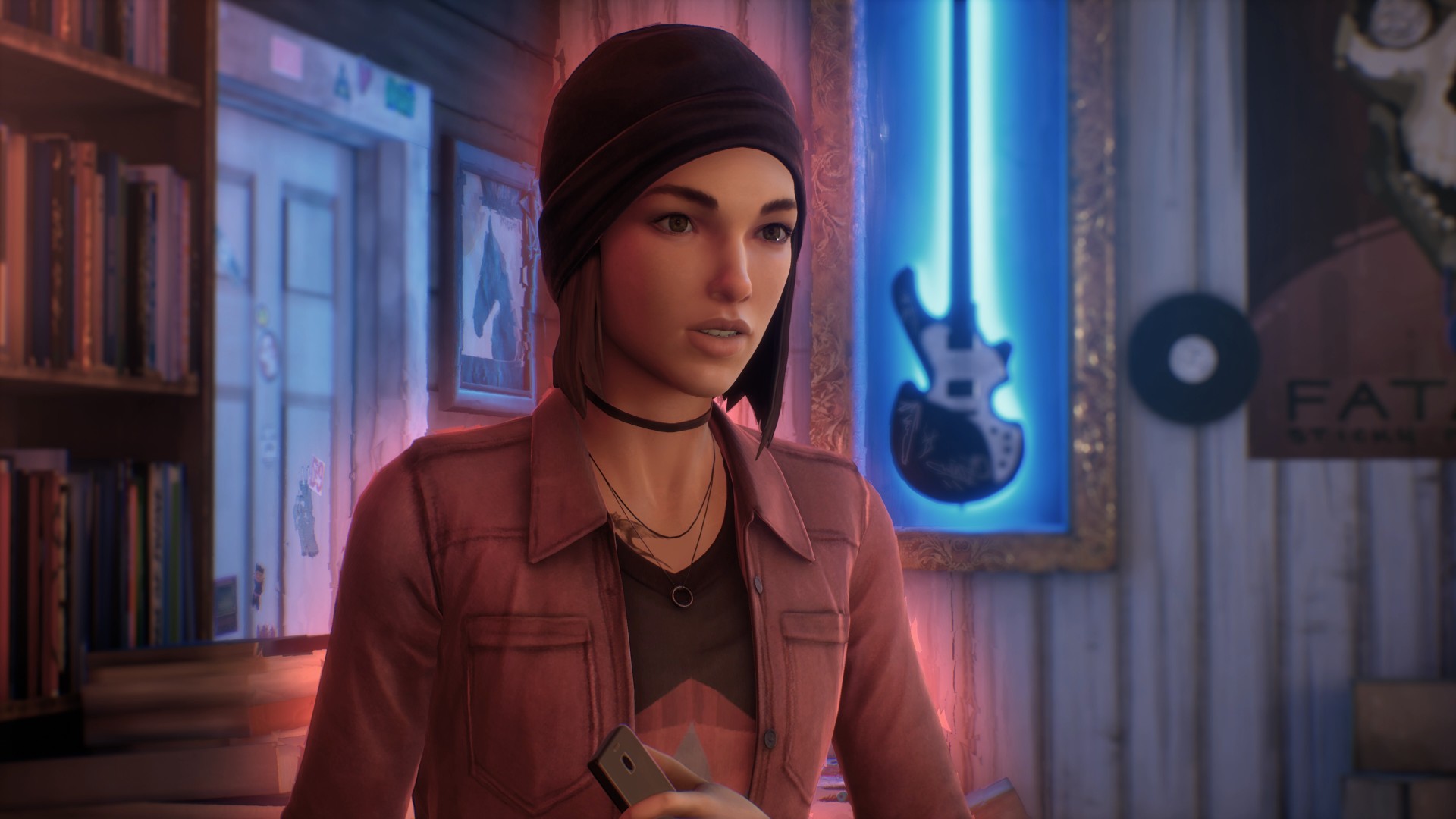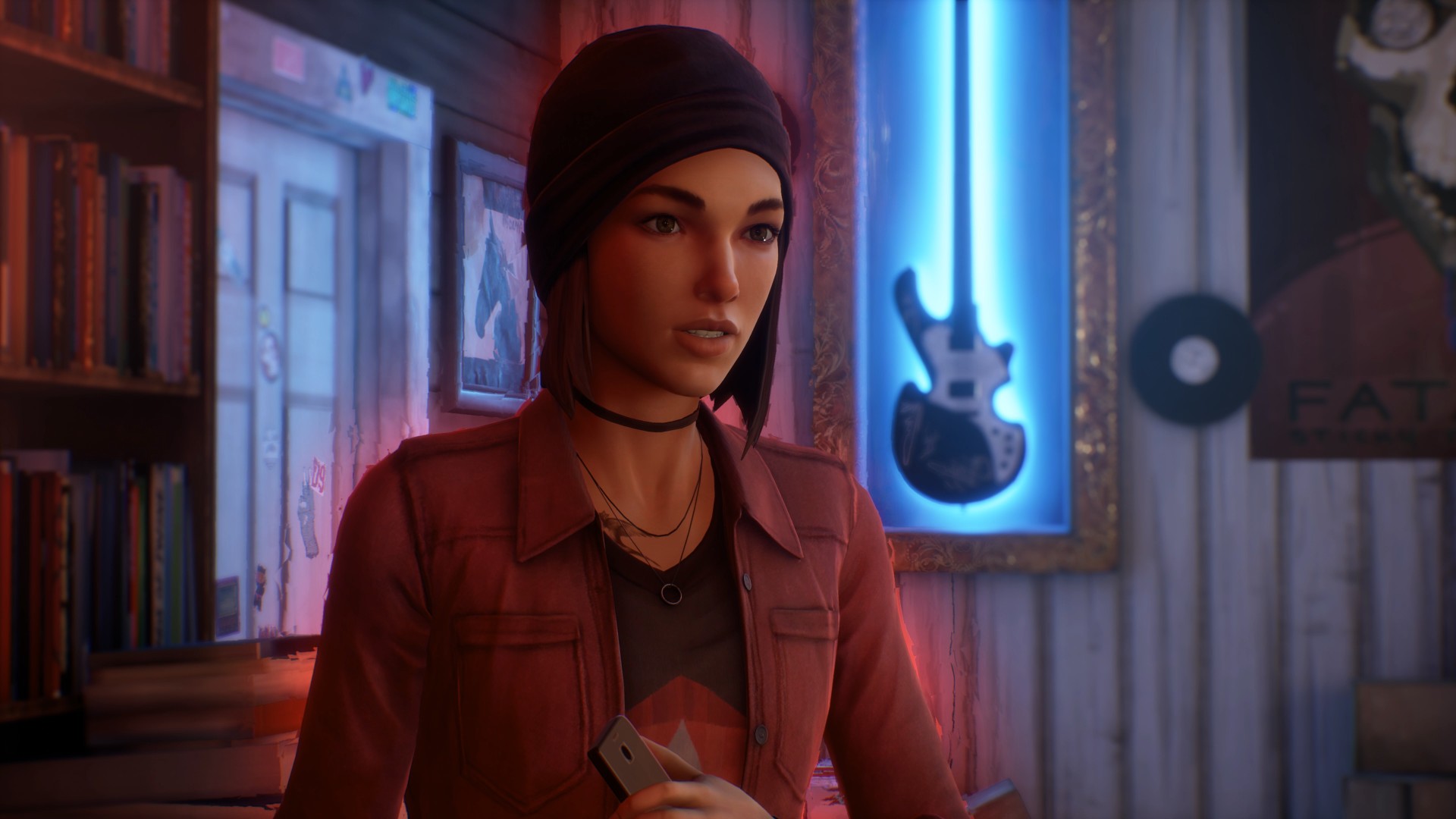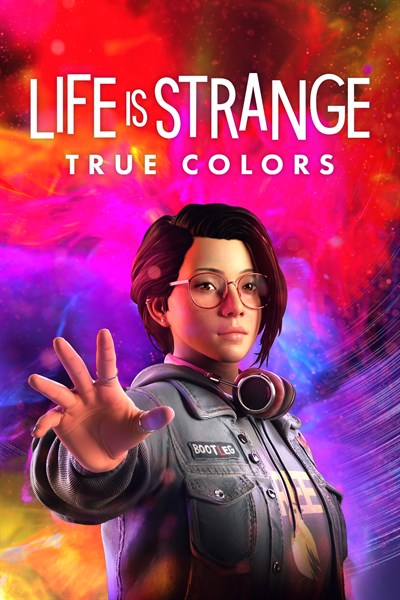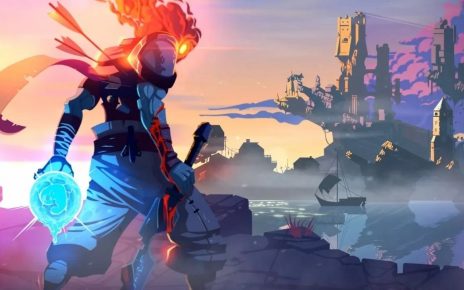Summary
- The supernatural gameplay at the heart of Life is Strange: True Colors is built around tapping into the brightly colored auras surrounding other characters, and diving into the strong emotions they represent.
- Making this extremely visual, color-driven power accessible to players with Color Vision Deficiency (CVD) was emblematic of the Deck Nine team’s approach to accessibility, as they crafted new solutions and aimed for the most inclusive Life is Strange yet.
- While delivering on that aspiration, we know there will always be more to work towards. We look forward to making ever-more accessible innovations in future Square Enix titles, with feedback and guidance from our in-house Accessibility Team, and from our partners at Xbox.
Hello! I’m a small part of the brand team for Life is Strange: True Colors, which recently released for Xbox One and Xbox Series X|S. Today, I wanted to take you through how Deck Nine Games and Square Enix ensured that our core new gameplay mechanic — harnessing the emotions of others by tapping into blazing, colored auras — was made as accessible to as wide an audience as possible.
The Power of Empathy
Alex Chen, our fantastic new protagonist, can see, hear, and experience the strong emotions of others as if they are her own – a psychic supernatural power.
From the start, the team knew this power would manifest in colored auras around non-player characters (NPCs), being able to judge a character’s emotional state before diving in deeper to reveal their innermost secrets.
The look and feel of the game’s four emotional auras – blue for sadness, red for anger, purple for fear, and gold for joy – evolved numerous times over the course of development, but never strayed far from the team’s creative vision.
But also front-of-mind for the developers was how a game that uses color as an emotive narrative device could best support and include players with Color Vision Deficiency (CVD).
An Accessible Color Spectrum
Worldwide, there are approximately 300 million people with colour blindness, and who have one of the three main types of CVD, so we knew a sizeable proportion of our audience would be affected.
The solution? The team developed a suite of three specific, adjustable filters, found in the Accessibility menu, addressing those main types:
- Deuteranopia (a filter to make greens more distinguishable from reds)
- Protanopia (a filter to make reds more distinguishable from greens)
- Tritanopia (a filter to make blues more distinguishable from yellows)
As they tweak, players can see examples of the filters in action across all four auras, and the strength of the filter can be adjusted to personal taste. They can also be adjusted at any point during play.
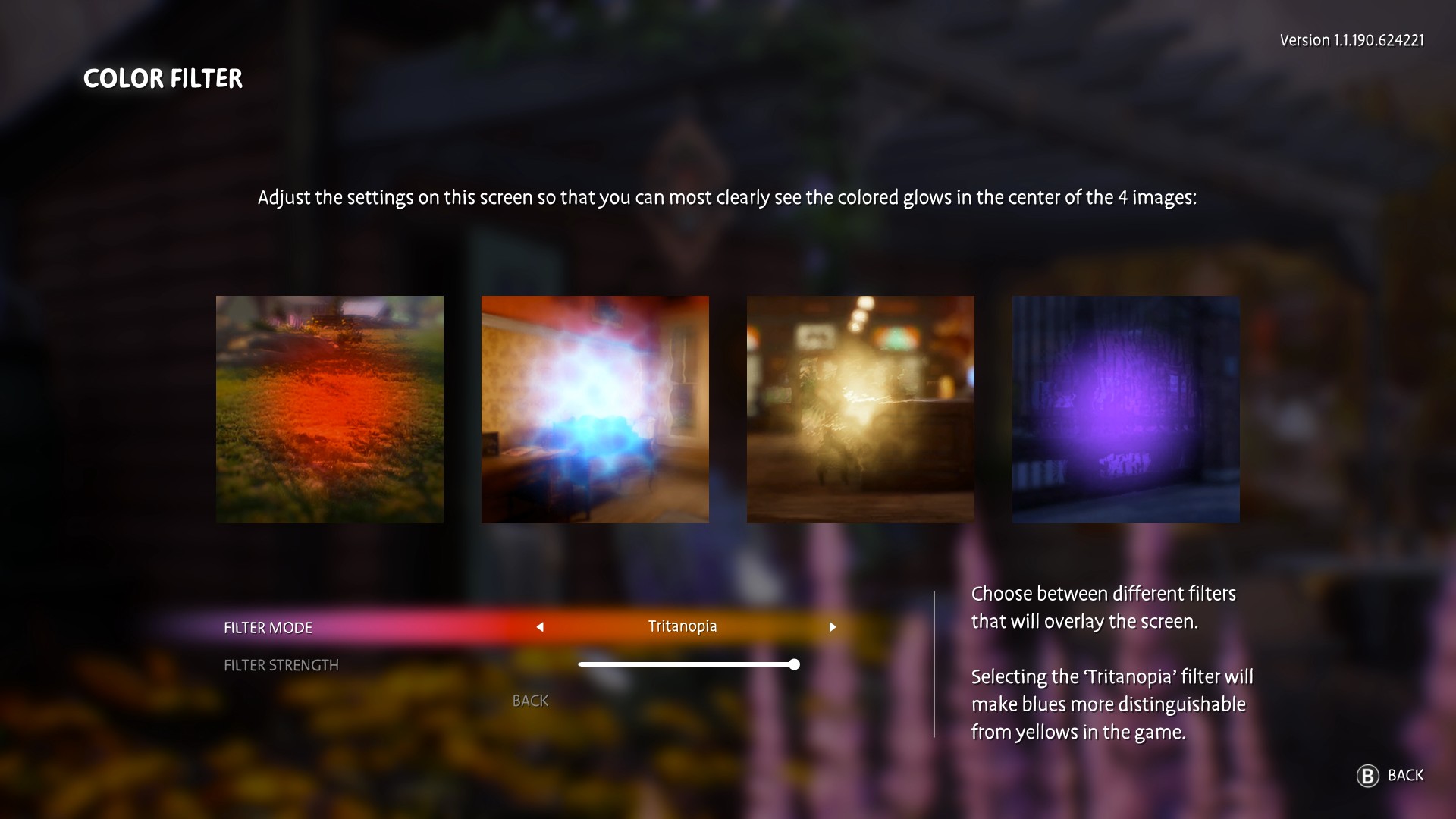
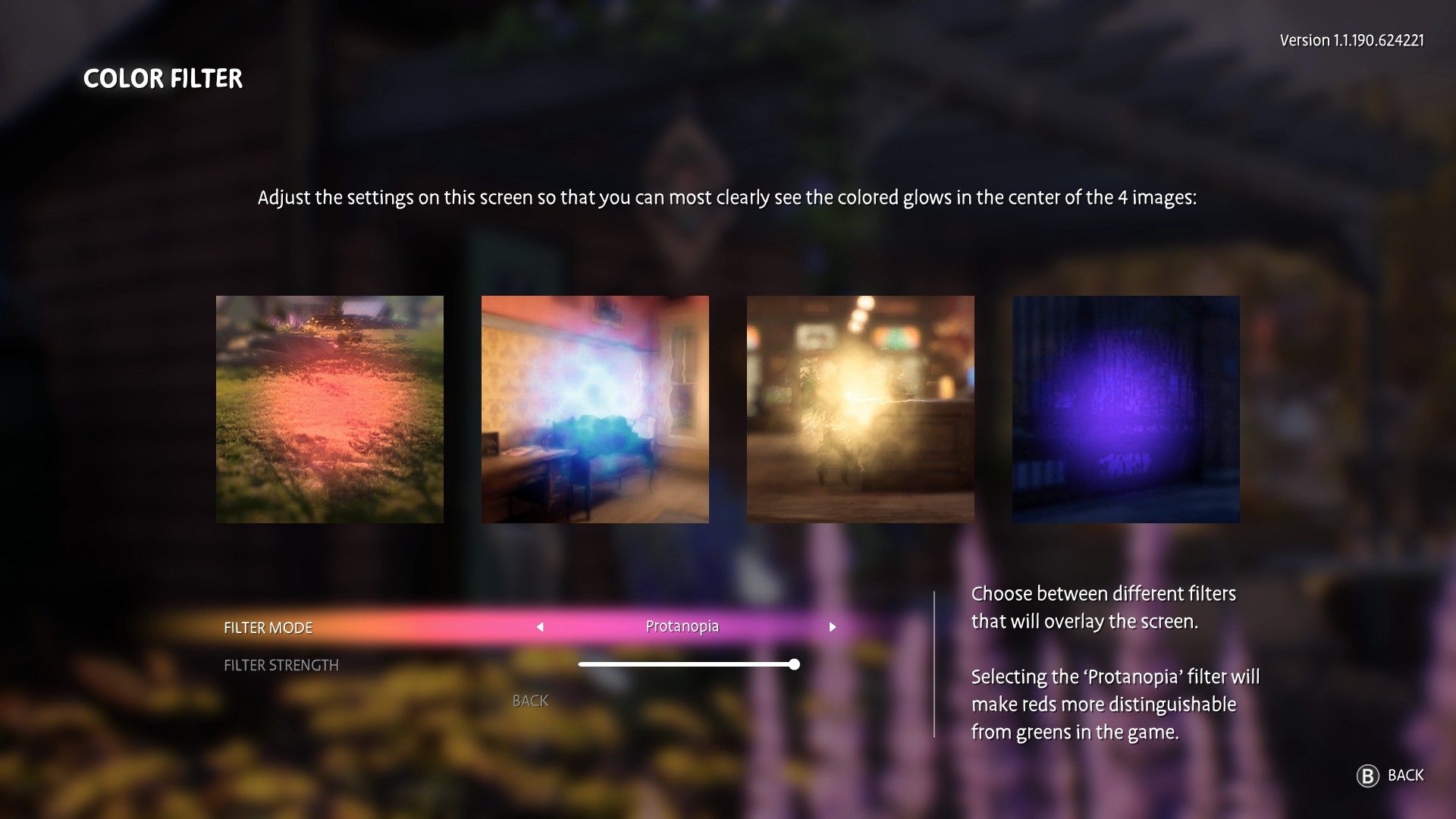
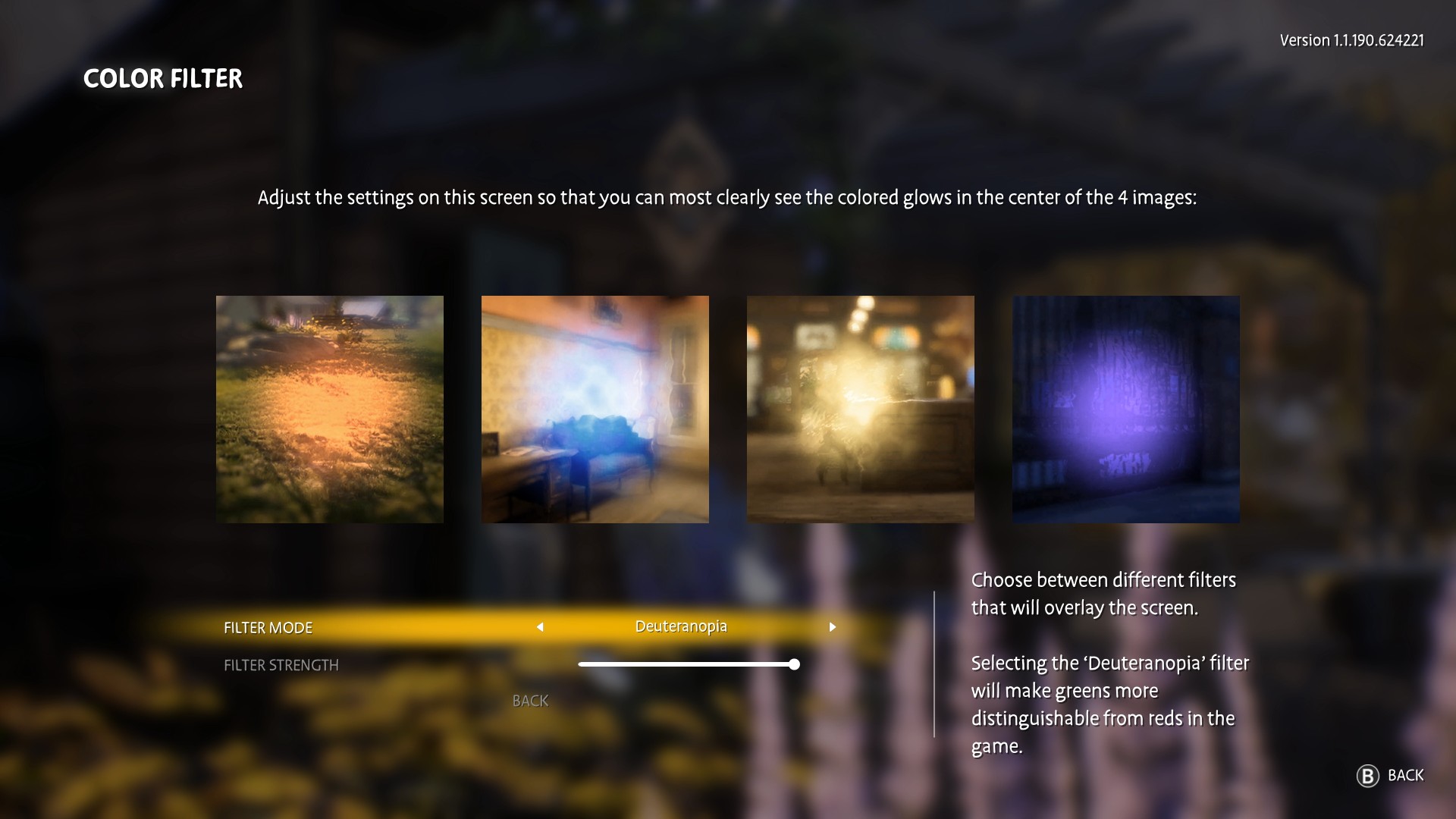
Making the auras more accessible wasn’t just about the filters, of course. Other aspects of color accessibility included developing the unique textural design of the auras, so they become more distinct from one another, even in greyscale.
Creating Nova Moments for All
This applies most to the ‘hero auras’ you’ll interact with during key emotional scenes in Alex’s journey – scenes that start with what we call Nova Moments: instances where the strength of the emotion is such that the world around Alex warps to reflect a character’s inner emotional reality.
Scenes like those where Alex must help Ethan conquer his fear in a terrifying and life-threatening situation, or when she must uncover the real root cause of Steph’s sadness and grief so that she might help her begin to heal.
Here, the characteristic properties of the different auras become most evident – like the dark, snaking tendrils of fear, or the pulsating, oceanlike waves of sadness.
The UI also has a part to play in every power moment, with the interaction icon changing styles to denote each emotion, as Alex draws near and triggers her abilities.
With all these deeply rooted storytelling devices so integral to the story of Life is Strange: True Colors, it made it more important for us to make sure the experience was accessible to everyone.
In speaking with Life is Strange: True Colors Producer at Deck Nines Games Rebeccah Bassell,she notes that when thinking about accessibility, it isn’t just the work of a single department that comes in when the rest of the game is done. “It’s an effort that crosses multiple disciplines from the start, from Art Direction, to UI, to Programming, and of course to QA testing,” she explains. “As with everything on a game, it’s the result of the whole team pulling in the same direction to deliver something bigger than the sum of its parts.”
Testing Accessibility During a Pandemic
Like many games releasing in 2021, the last leg of development for Life is Strange: True Colors took place during the unprecedented global pandemic. Every part of the game was affected, from having to adapt to distributed development at home, to finding creative – and unusual – ways to capture some of the game’s most stunning performances in COVID-safe environments.
But the pandemic affected player testing, too. Traditionally, near-final code is tested by small groups of focus testers around the world, to ensure features work as planned, and with the audiences at which they are targeted. With that option largely off the table due to strict lockdowns, the teams turned to one of Square Enix’s biggest resources – its own in-house staff.

Developing better accessibility in our titles is a key concern for all our development teams around the world, as Square Enix West Accessibility Lead Améliane Chiasson attests.
“The accessibility department is new at Square Enix West and we’re still learning and working towards making more accessible games,” she explains. “So, we were very excited to be involved, later in development, in assisting the team on Life is Strange: True Colors. That being said, we’re well aware that work still has to be done. These learnings are very important and will help us in our mission to make our experiences more inclusive. It’s a journey, and we are very grateful for our community of players, disabled and non-disabled, who are taking the time to give us feedback and report barriers.”
It was with Améliane and the Crystal Dynamics User Research team’s help that testers were recruited and set to work.
Gathering Global Feedback
With employees in LA, Montreal, London, Paris, and Hamburg, to name just a few, the Accessibility team on Life is Strange: True Colors reached out to staff with CVD, sharing test builds and getting valuable feedback across three key sessions in late 2020. We salute those unexpected playtesters – and they got to play the game early!
But our accessibility options don’t end with color filters. As Life is Strange is such an accessible series by nature, with gameplay drawn from exploration and conversation rather than fast reactions, we’ve always endeavoured to improve accessibility from game to game. For example, we know that color filters are not the be-all, end-all solution for addressing CVD-related barriers. In the future, we hope to be proactive earlier in the design phase on our games, to avoid having those barriers to begin with.
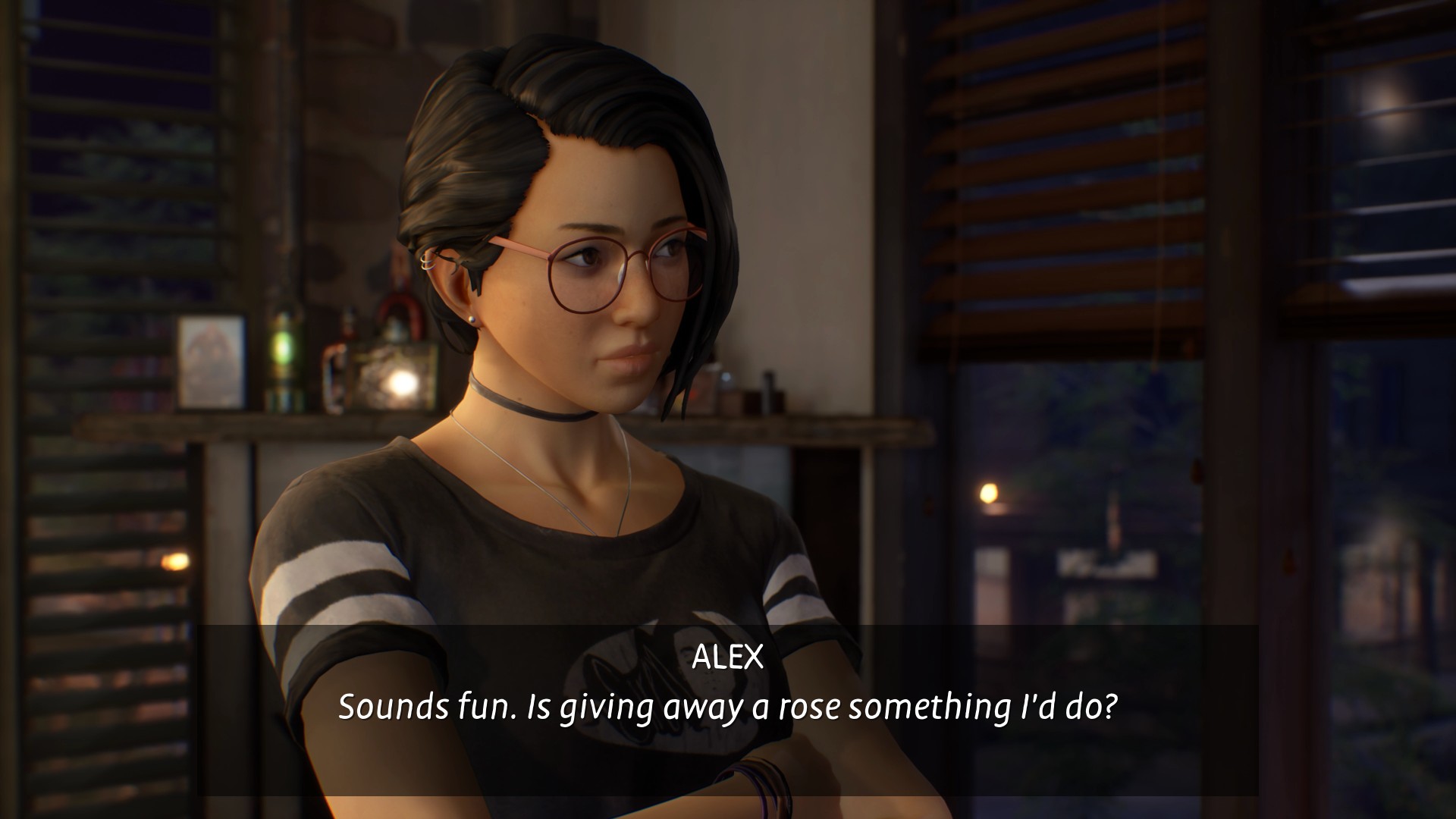
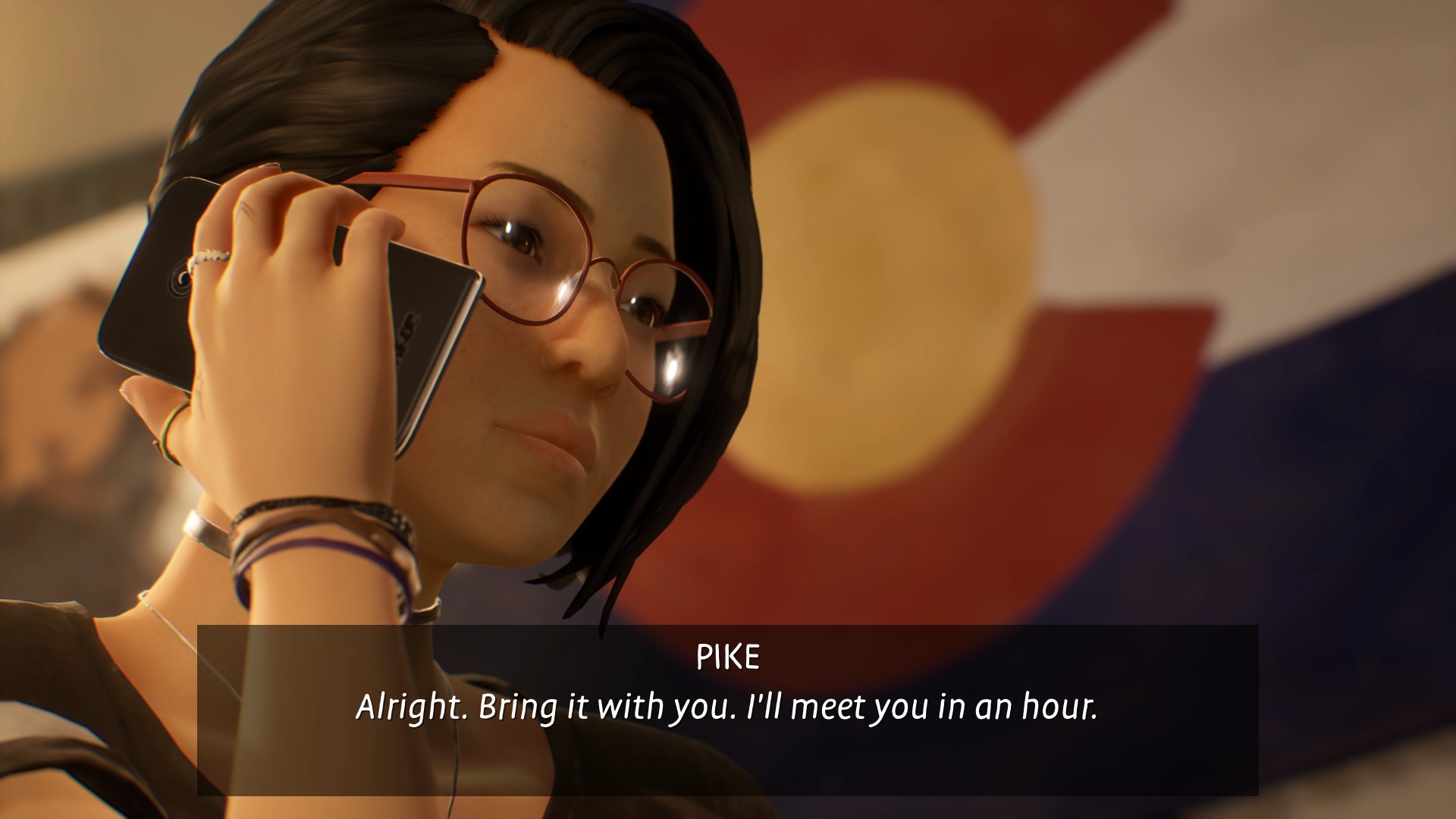
From adjustable subtitle and text sizes and fonts to being able to adjust the speed at which you need to make timed dialogue choices, many aspects of the game can be tweaked.
New for Life is Strange: True Colors are toggles to skip gameplay that may require particularly dextrous inputs, and optional warnings before sudden instances of brightness or volume.
Creating Accessibility Beyond the Game
On Xbox One and Xbox Series X|S, accessibility also extends beyond what’s coded in-game through the controller accessibility options opened up to everyone on the platform, through the brilliant Xbox Adaptive Controller.
Working with the team at Xbox, we explored even more ways to build accessibility into the game and following our close collaboration on previous Life is Strange titles it became clear the options are always expanding when you think of the player at the core of your strategy.
In talking with Xbox’s Gaming for Everyone Director Katy Jo Wright, she shared her vision on how developers like Deck Nine Games can have a tremendous impact on so many avid players.
“When we intentionally focus on those who cannot experience the joy of a game and strive to solve for them, we’re often unintentionally opening a door for many more to come in and join,” she says. “This inclusive and accessible design is a core principle at Team Xbox as we want to provide experiences where everyone can play. It’s always inspiring to see teams, like the developers of Life is Strange: True Colors, go beyond compliance to create enjoyable experiences for all players.”

We were also fortunate to put the game through the Microsoft Game Accessibility Testing Service (MGTAS) at the end of the development process, to get detailed feedback on all the accessibility features we’d included – and gain insight for future titles across the Square Enix portfolio.
Xbox’s Director of Accessibility Anita Mortaloni also spoke to the exciting possibilities of the program and what it means for increasingly more accessible games in the future.
“It’s now so easy to get high quality accessibility feedback from both a subject matter expert and gamers with disabilities, all with the shared aim of making titles more accessible to our communities,” she explains. “We want to get the word out that our program, and others like it, are out there, and we’re delighted to see more and more developers taking advantage of them.”
We hope that Life is Strange: True Colors thrills and welcomes you, whomever you are. You can play Life is Strange: True Colors today on Xbox One and Xbox Series X|S.


Life is Strange: True Colors
Square Enix
Related:
Next Week on Xbox: September 6 to 10
War for Wakanda Expansion for Marvel’s Avengers is Available Now for Xbox One and Xbox Series X|S
Xbox Partners with Special Olympics for the Inaugural Gaming for Inclusion Esports Tournament


